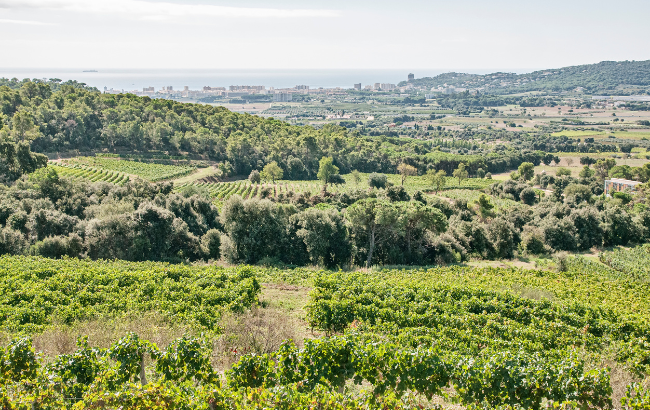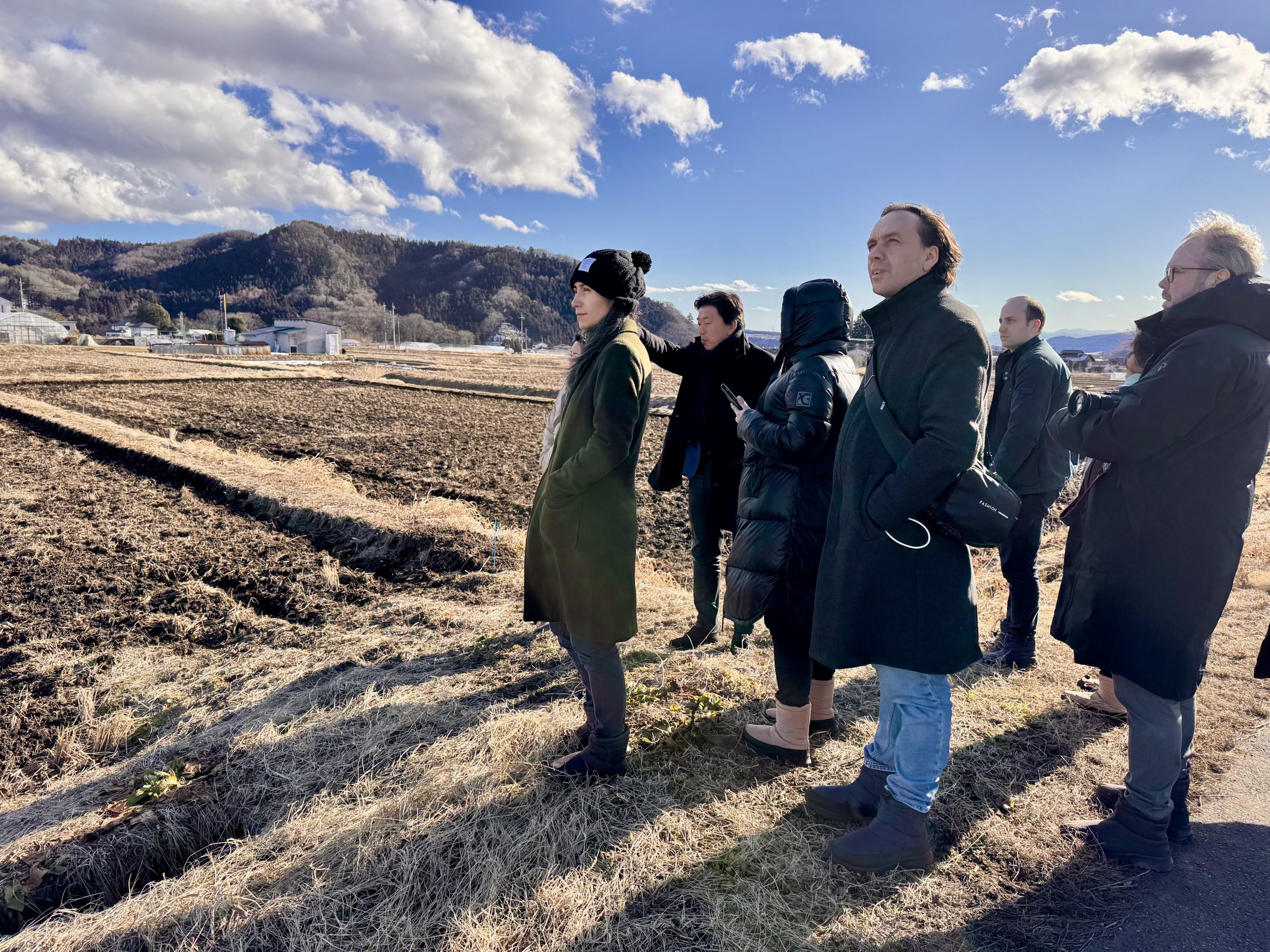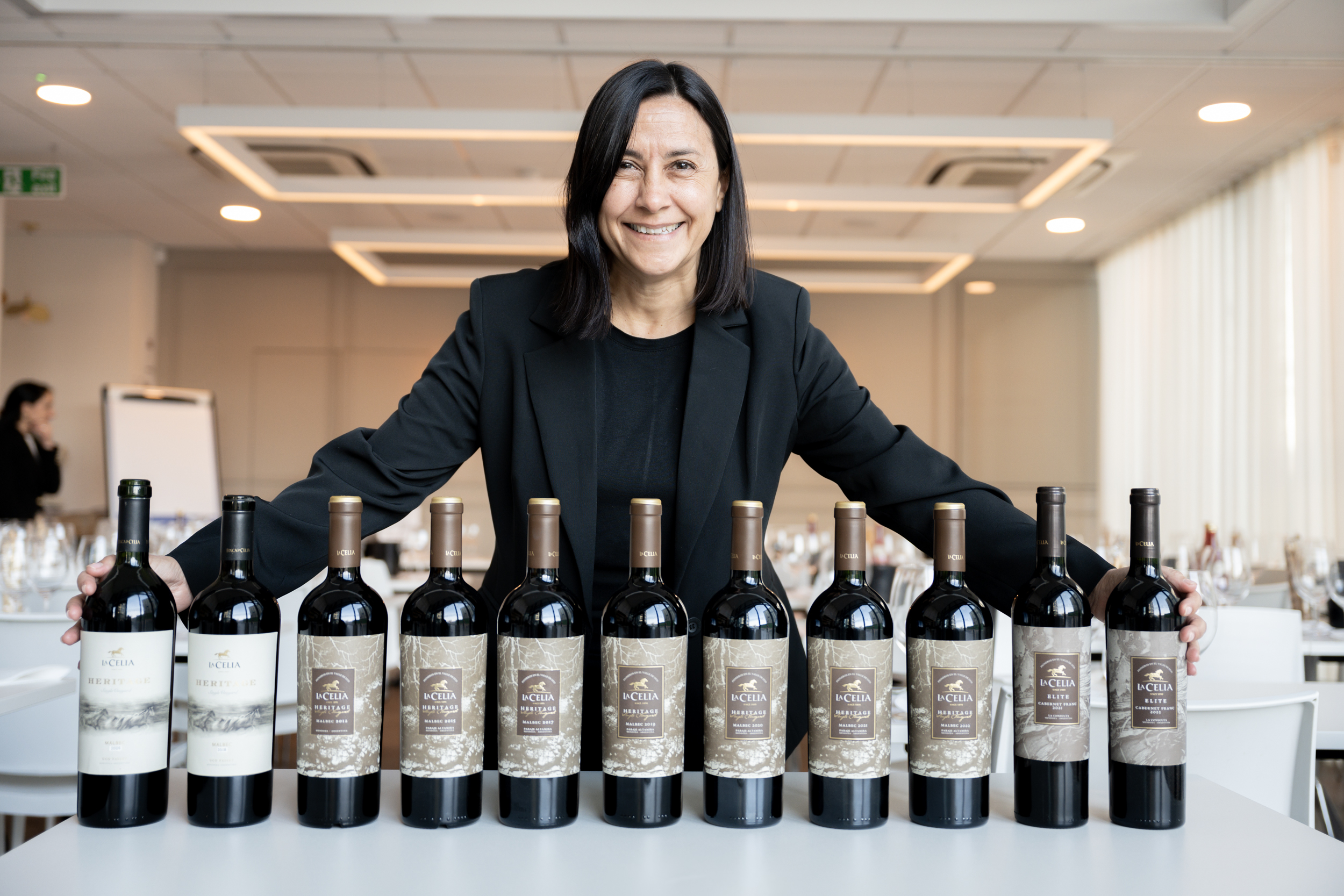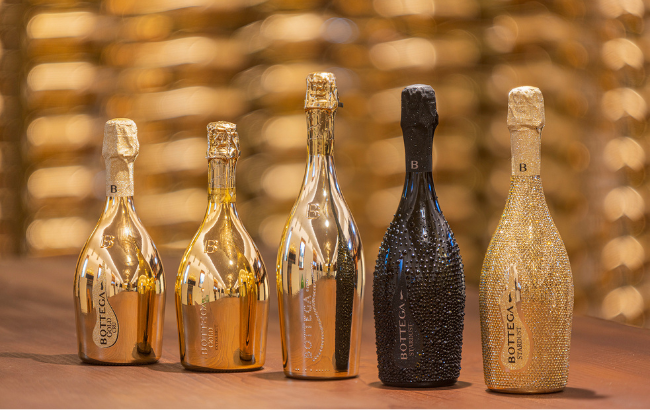France to produce one of smallest vintages in a century
By James EvisonThe production of wine in France is estimated to decline by 18% year-on-year and 11% against a five-year average, according to figures from the French government’s agricultural statistics department.
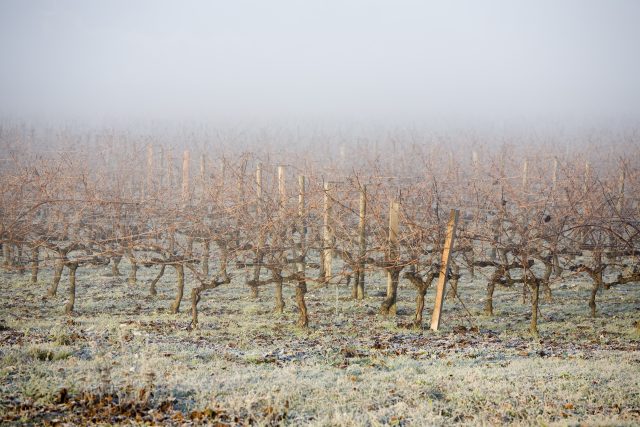
Wine production is now estimated to be 39.3 million hectolitres, according to figures from Agreste, the statistics and forecasting department of the Ministry of Agriculture and Food.
This would make it one of the lowest years for production since the Second World War, when the industry was recovering, and one of the smallest harvests in a century —going back 67 years to 1957 for the last time production was this small.
The ministry reported last year that the harvest fell within the five-year average range of 44.5 to 46.1 million hectolitres.
Although as can be seen in the graph below, the average since the turn of the century has been around 40-50 million hectolitres, it is against a backdrop of diminishing levels, counteracted by a few strong vintages.
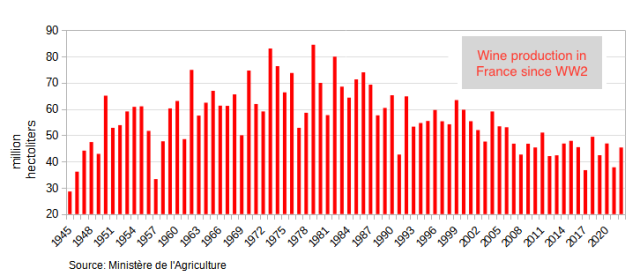
The decline is due to particularly unfavourable weather conditions that have reduced production potential in almost all wine-growing areas, as the impact of climate change in traditional wine-growing regions has begun to bite.
The most significant declines concern the vineyards of Jura, Charentes, Val de Loire and Beaujolais-Bourgogne, Agreste reported.
National production
According to data to the beginning of September, the 39.3 million hectolitres estimate has been adjusted downwards from the previous month, due to a better assessment of the flowering results in the latest vineyards, particularly in Charentes.
It could remain slightly higher than the 2021 harvest, which was marked by severe frost. But all categories of wines will be affected by this decline, in particular wines intended for the production of eaux-de-vie (-34%) which had an exceptional 2023 harvest, and those from the Loire Valley.
This year, many vineyards have been impacted by phenomena such as coulure, which causes the flowers and young berries to fall, or millerandage, which causes a variation in the size of the berries.
The phenomena are the result of wet and cool periods during flowering and mildew has affected the majority of wine-growing areas, sometimes causing significant losses.
Partner Content
In addition, episodes of frost or hail have reduced production volumes, Agreste reported.
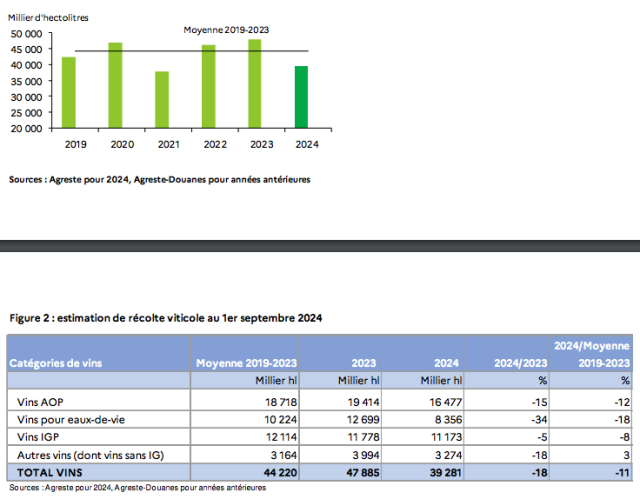
Regional production
The data agency reported decline is expected in almost all regions, with the Jura, especially badly hit on a year-by-year basis, with severe frost and mildew significantly reduced production, which it expects to fall by 71% over one year after “a very good 2023 harvest”.
Champagne expected to be 16% lower due to spring frosts, coulure, hail, mildew and scalding during the growing season. But, despite the fall, it would still be higher than the five-year average for the region.
In Burgundy, mildew is causing losses, “particularly in Côte d’Or”, it said, and hail has affected the Yonne vineyards. In Beaujolais, mildew and hail “are causing significant losses”. Production in the whole of Burgundy-Beaujolais would be a quarter lower than the high level in 2023.
Meanwhile, in Alsace, mildew and flowering disrupted by cool, wet weather are resulting in a 13% decline in production. In Savoie, frost in the spring, then mildew in the summer affected the vineyard, with production dropping by 5% over one year. But again, it would be stable compared to the average of the last five years.
In the Loire Valley, mildew and coulure, following flowering in cold and humid conditions have also caused significant losses. A delay of 10 days is noted compared to 2023, Agreste said. Wine production would drop by 30% compared to last year, and down 15% compared to the 2019-2023 average.
In Charentes, despite an increase in surface area, production is expected to decrease by 35% compared to the record year of 2023, due to a low number of bunches and poor flowering due to wet conditions.
Bordeaux
Bordeaux’s reduction in surface area, which has come as part of the plan to uproot 8,000 ha this year, as previously reported in db, as well as losses caused by coulure, millerandage, mildew, and hailstorms are contributing to a decrease in production. This is expected to fall by 10%, after an already reduced harvest in 2023.
In South-West France, coulure, millerandage, mildew, and episodes of frost or hail are also reducing production potential. The harvest would be slightly higher than the reduced 2023 harvest, but would remain below the five-year average. In Languedoc-Roussillon, mildew, encouraged by significant rainfall at the start of summer, has reduced the production potential in the Gard. The drought in the Aude and the Pyrénées-Orientales has also limited production. The area’s harvest is expected to be 4% lower than last year, Agreste said.
Across the south-east of the country, millerandage has caused losses, particularly in the Vaucluse. Late frost in the spring also caused damage in Provence and the Drôme. Production is expected to be down 12% compared to 2023 and the 2019-2023 average.
In Corsica, rainfall in August should mitigate the effects of the drought, it said. Production is expected to fall 5% compared to 2023, a year of high production, but will remain up compared to the five-year average by 9%.
Related news
What brought Bijou to the south of France?

